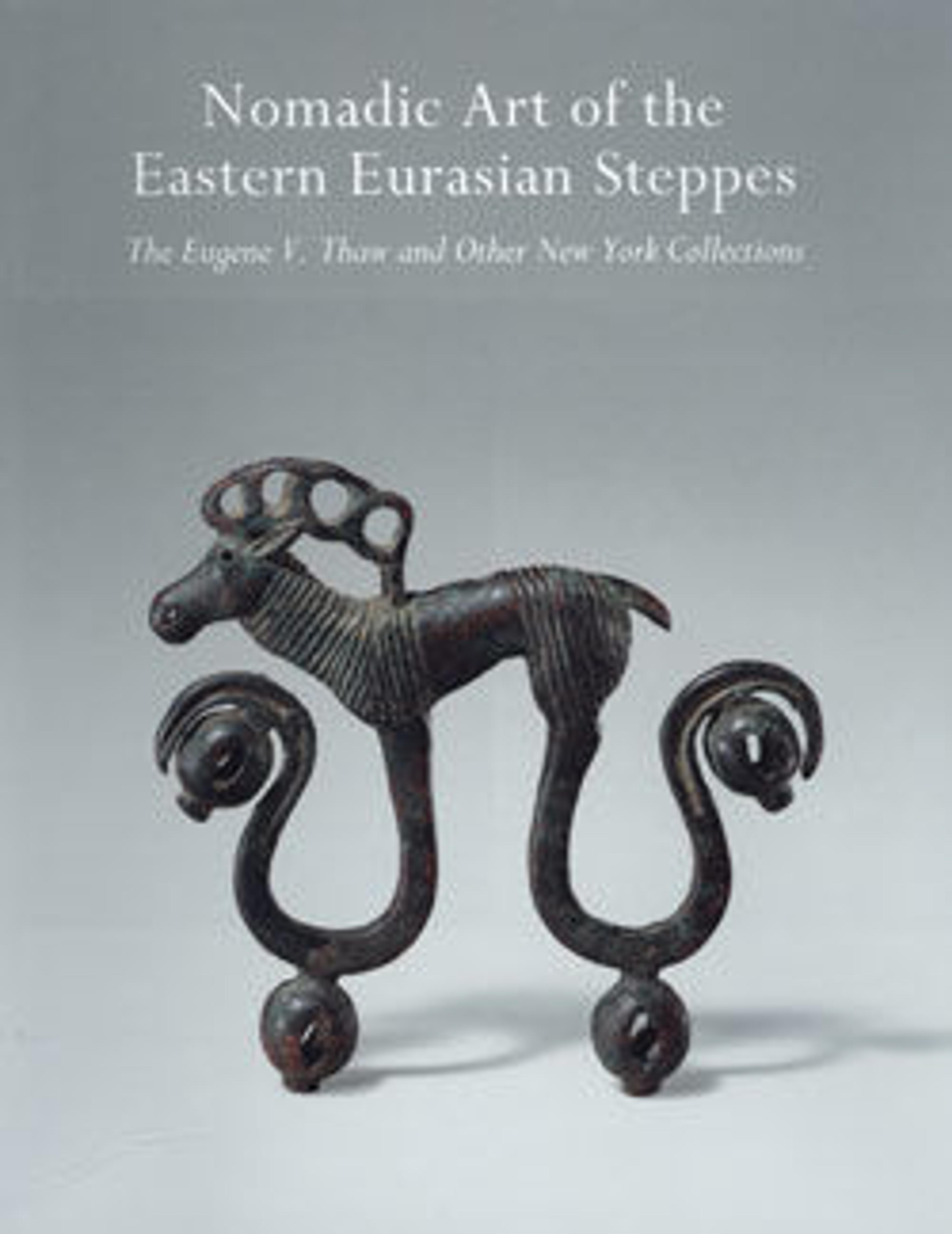Belt Plaque in the Shape of a Crouching Horse
Intriguing metal artifacts such as this silver plaque and scattered references in Chinese and Western histories are our only sources of information about the numerous pastoral, seminomadic, and horse-riding tribes that inhabited the vast reaches of Central Asia traversed by the Silk Road.
Most likely used as an adornment on a bridle or other equine accoutrement, this small plaque illustrates the dissemination of artistic motifs across Asia. The beaklike shape of the horse's muzzle, the dramatic twist of its hindquarters, and the lively openwork frame all reflect an imagery and stylistic approach found in objects made earlier by Indo-European Scythian peoples living on the Iranian plateau and in the area around the Black Sea. Comparable motifs appear in tattoos on the body from tomb 2 at Pazyryk, in the Altai mountains of southern Siberia. Eight of the twenty-five burial mounds (kurgan) at that site, currently dated between the late fourth and early third century B.C., have yielded textiles and metalwork from West and Central Asia as well as silk, lacquer, and metalwork from China.
This plaque was cast in silver and has remnants of gilding on its surface. It was probably made in North China for a member of the Yuezhi or one of the other confederacies in Central Asia that maintained an active trade with various Chinese centers, exchanging furs and carpets for commodities such as grain and luxuries such as silk or metalwork.
Most likely used as an adornment on a bridle or other equine accoutrement, this small plaque illustrates the dissemination of artistic motifs across Asia. The beaklike shape of the horse's muzzle, the dramatic twist of its hindquarters, and the lively openwork frame all reflect an imagery and stylistic approach found in objects made earlier by Indo-European Scythian peoples living on the Iranian plateau and in the area around the Black Sea. Comparable motifs appear in tattoos on the body from tomb 2 at Pazyryk, in the Altai mountains of southern Siberia. Eight of the twenty-five burial mounds (kurgan) at that site, currently dated between the late fourth and early third century B.C., have yielded textiles and metalwork from West and Central Asia as well as silk, lacquer, and metalwork from China.
This plaque was cast in silver and has remnants of gilding on its surface. It was probably made in North China for a member of the Yuezhi or one of the other confederacies in Central Asia that maintained an active trade with various Chinese centers, exchanging furs and carpets for commodities such as grain and luxuries such as silk or metalwork.
Artwork Details
- 臥馬紋銀帶飾
- Title:Belt Plaque in the Shape of a Crouching Horse
- Date:3rd–1st century BCE
- Culture:North China
- Medium:Silver
- Dimensions:H. 3 3/16 in. (8.1 cm); L. 5 11/16 in. (14.5 cm)
- Classification:Metalwork
- Credit Line:Gift of Ernest Erickson Foundation, 1985
- Object Number:1985.214.78
- Curatorial Department: Asian Art
Audio
8986. Overview: Decorative Animal-shaped Ornaments
0:00
0:00
We're sorry, the transcript for this audio track is not available at this time. Please email info@metmuseum.org to request a transcript for this track.
More Artwork
Research Resources
The Met provides unparalleled resources for research and welcomes an international community of students and scholars. The Met's Open Access API is where creators and researchers can connect to the The Met collection. Open Access data and public domain images are available for unrestricted commercial and noncommercial use without permission or fee.
To request images under copyright and other restrictions, please use this Image Request form.
Feedback
We continue to research and examine historical and cultural context for objects in The Met collection. If you have comments or questions about this object record, please contact us using the form below. The Museum looks forward to receiving your comments.
